Introduction
Archbishop James (Roy C. Toombs. August 30, 1887 – November 1, 1970) is one of the most enigmatic figures ever to serve in the episcopate of the Russian Orthodox Church Outside of Russia. Within ROCOR, there were those who extended trust and respect to him; those who did not want him in ROCOR at all, much less as a hierarch; and those who reviled and condemned him. The great majority was totally unaware of his existence. Those who knew him found him a dedicated and loving pastor, one who truly cared for people; a patient and knowledgeable teacher; and a hierarch who had made the transition from a pseudo-Orthodox group probably more influenced by occult teachings than by Orthodoxy to the True Church of Christ without hesitation once he had found it. He pursued a two-fold mission: to bring Americans to Holy Orthodoxy, and to have the Divine Services and as many Orthodox texts as possible translated into English. Late in his life, after he had left ROCOR, he served as father-confessor to several Orthodox bishops who lived in the New York City area. He passed away almost unnoticed.
Some who did not know Archbishop James, most of whom came to ROCOR after he had left it, or even after his death, even felt that the memory of Archbishop James was a threat to their positions. The fact that Archbishop James left no lasting legacy whatsoever within ROCOR, and the fact that the great majority of members of the Church had no idea who Archbishop James was, made absolutely no difference to them. If his name was spoken, those present were told only what was wrong with him. And everything was wrong! He was denounced as a Mason. (This because of an apocryphal story told by “someone” in which Archbishop James, attending “some” church function, stood up, which caused his wallet to fall out of his pocket. Of course, the only thing that fell out, apparently face up, and apparently immediately recognizable to “some” clergy who were present, was, lo and behold, his Mason’s membership card. The likelihood that this story is true shares the likelihood of verifying it!) He was also denounced as a “practitioner of the occult,” who “still lived with his wife” after he became a hierarch in ROCOR. He was condemned for “never attending Synod meetings,” and because “he didn’t even have a beard!” But the worst thing he did, in the eyes of his self-appointed judges, was that “he left ROCOR”! This was at a time when “leaving the Synod” was the worst sort of apostasy that could possibly occur.
Some who were totally unaware of the existence of Archbishop James were also opposed to even the idea of an “Archbishop James.” In articles about Metropolitan Anastassy’s early years in America, it mentions the “six bishops” he consecrated: however, there were seven consecrated — the one missing from the list is Archbishop James. An oversight? A purposeful omission?
Among people who knew him, those who wrote about him, even his critics who “knew everything” regarding Archbishop James, there was no information on birthdate, birthplace, family, marriages, education, employment, or any other important milestone of his life. There is nothing in the files of ROCOR, the Orthodox American Church, or any of the “independent” churches that claim Toombs as a source of, or connected to, their apostolic succession. The story of Toombs’ life raises the question of whether this lack of information was due to an intentional effort to conceal it. While that question cannot be answered here, the following account can at least begin to fill the void.
I.
Roy C. Toombs was born on August 30, 1887, to Anson and Hannah Elizabeth (nee Nichols) Toombs in Winfield, Kansas. Anson, born in Richfield, New York, in 1843, moved with his family to Illinois as a young boy. He went to Iowa in 1857, and enlisted in the 13th Regular U.S. Infantry in 1862. He served alongside George and Joseph Nichols in the Civil War, and met their sister, Hannah. Hannah Nichols was born in Ontario, Canada, in 1854. Her family emigrated to the U.S. and settled in Iowa in 1858. Anson and Hannah were married in Vinton, Iowa, on October 30, 1867. Anson and Hannah had ten children: Adora, b. 1867; Frank, b. 1869; Matilda, b. 1871; Elota, b. 1872; Cora, b. 1875; Harry, b. 1877; Elsie, b. 1880; Jesse, b. 1883; Roy (Abp. James); and George, b. 1888.
In 1877 the Toombs family moved to Cowley County, Kansas. Cowley County is located in southeastern Kansas, and its southern boundary is the Kansas-Oklahoma border. The future Archbishop James was born “in another world, in another time. . .” The area, in the midst of the Kansas Flint Hills, was home to the American bison, wolves, coyotes, deer, antelope, beaver, and otter. There were legends in Cowley County of Spanish explorers Hernando Cortes and Ponce de Leon traversing the area in the 1500s, searching for cities of gold and a fountain of youth. A Spanish sword and other utensils were plowed up within the city limits of Winfield in the late nineteenth century and are still preserved there today. The Old California Trail, remnants of which are close to downtown Winfield, was first used by Native Americans and was later the principal route for those from the American South to California during the Gold Rush of 1849. The land on which Cowley County is located was part of the Diminished Osage Reserve. Settlement on the reserve by whites was against the law and considered trespassing. This did not stop the Kansas legislature from passing legislation that founded Cowley County on March 30, 1867. By 1869, several areas of the county had been cleared and settled by whites. Still considered trespassers, the Osage tribe allowed those to stay who could pay a $5 head tax to their Chief Chetopah. On July 15, 1870, the U.S. Congress passed legislation opening the Diminished Osage Reserve to settlement, and the Osage Chiefs ratified this act on October 24, 1870. In 1873 the town of Winfield was founded; quickly, buildings and businesses steadily increased. It was named after Winfield Scott, D.D., a well-known Baptist preacher in Leavenworth, Kansas. Problems in early Winfield included regulating destitute itinerants, sanitation, fire protection, and plain old lawlessness. The first train arrived in town on September 30, 1879; the telegraph arrived on September 25, 1879; the first time that mail rode out of town on the railroad was October 10, 1879. The newly pacified Nez Perce, forcibly relocated from their ancestral home in Oregon to the Indian Territory (Oklahoma), were occasionally seen in town. By the year of Archbishop James’ birth (1887), Winfield had become a rail hub, with five railroads coming into town. By 1900, with the population increased to 5,000, there were several flour mills, stores, grain elevators, newspapers, banks, churches, schools, and a variety of small factories. The early twentieth century brought auto races and airplanes to Winfield. The future Archbishop James was truly born in the Wild West, one that was colliding head on with the modern age.
In 1910, Roy Toombs was still living at home with his parents in Winfield. Mary E. Toombs, born 1889, was Roy Toombs’ first wife (her maiden name, the date of marriage, and the length of the marriage are not known); their son Farrell was born in 1911; the marriage probably took place in 1910 or 1911. Farrell was raised in Missouri, and by 1920 the family was living in Chicago’s Ward 7. (Farrell, later a priest of the Holy Orthodox Church in America, graduated from the University of Chicago, and spent almost thirty years as a Professor at the University of Toronto. After retiring in the late 1970s, he spent nearly two years in England, with the Russian Orthodox community in Oxford. He died on October 23, 1997) The young Roy Toombs was fascinated by trains, and is known in his youth to have hopped freights; Chicago would have certainly been an attraction; in those days all railroads led to Chicago. An earlier visit may have prompted the relocation to Chicago, as well as jobs. At the time Chicago was a financial center rivaling New York. In 1920, Roy Toombs was a banker, and also co-owner of the brokerage house of Toombs-Daley, located on LaSalle Street. He was also connected with a bank in Downers Grove, Illinois; later, in the 1920s, he was president of the International Life Insurance Company of St. Louis. While no record of Roy Toombs attending or graduating from any college or university (or high school) has come to light, the possibility cannot be ruled out. Today employment in brokerage houses alone requires a degree. The term “banker” implies someone who either runs or owns a bank; it also implies a person older than thirty-two. The president of an insurance company, especially one with the assets that International Life of St. Louis possessed, also implies a man older than his thirties, and with some sort of degree. It is not known how Roy Toombs, the son of a farmer from Kansas, was able to rise to such a level of apparent importance.
The Roaring Twenties – famous for bathtub gin, flappers, and Al Capone’s gang wars in Chicago – was also a time of excess, fast and loose financial impropriety, and lax regulations. Roy Toombs got caught up in it. The “why” is not known, but it rarely is in such cases. It was announced in July 1927 that Roy C. Toombs, “Chicago investment banker,” had been made president of the International Life Insurance Company of St. Louis, Missouri. On August 5, 1928, it was learned that $3,500,000 in securities (the capital stock of the company) was missing from the International Life Insurance Company. The next day Toombs denied that the securities were missing. The day after that, it was revealed that the missing securities had been sent to Roy Toombs in Chicago. The news kept coming: Toombs was arrested; the Chief of Police of Chicago released him; it was found he had received “interlocking loans of $1,000,000 each”; irregularities also turned up in the Toombs-Daley brokerage firm and the bank in Downers Grove; Toombs was in bankruptcy court; after playing cat and mouse with the Chicago police, he was eventually arrested and extradited to Missouri on a governor’s warrant. The charges against Toombs stated that he had violated Section 3350 of the 1919 Revised Code of the State of Missouri, which makes it unlawful to sign, or cause to be signed, “any false or fraudulent certificate of ownership or any share or shares of capital stock.” Toombs’ defense was rather convoluted. He claimed that in August 1927, he borrowed $500,000 from the Great Southern Life Insurance Company on the authorization of its president, Mr. Greenwood. Toombs left certain collateral with Mr. Greenwood, which he wanted back. Toombs was promised a certain amount of shares of stock in the International Life Insurance Company of St. Louis, of which he was the president. The stocks coming to Toombs, however, were held in several safe deposit boxes as property of the International Company, a holding company incorporated in Delaware and directed by Toombs’ brother. The holding company agreed to turn the stock over to Toombs, but other unnamed persons were in possession of the keys to these safe deposit boxes, and refused to turn them over, supposedly until a later date. To remedy this impasse, Toombs had three Certificates of Stock (numbered D110009, D110010, D110011; Toombs was charged specifically only for the certificate of stock #D110009), each for 3,000 shares, issued in his name. The vice president and secretary of the International Insurance Company wrote them up and signed them as the correct authorizing agents for such a stock issue. Toombs claimed that these were not fraudulent shares, that since he was owed several thousand more shares of stock from the holding company than these 9,000, he was going to cancel 9,000 shares upon his being given the stock he was owed (the Company was only empowered to issue 37,500 shares of stock at that time, all of which were “outstanding,” that is, owned by someone). The state claimed a fraudulent overissue of stock; Toombs claimed it was not an overissue, but simply a case of him procuring the stock to which he was entitled. The jury disagreed with Toombs, and found him guilty on April 13, 1929. He was sentenced to pay a $3,000 fine and serve three years in the Missouri State Penitentiary. He appealed this case and lost. The state then charged Toombs with the exact same offense, this time for certificate of stock #D110011 (which of course led to the question: if they got a second conviction, would he be charged a third time for the remaining certificate?). Toombs was again convicted, and sentenced to pay a $1.00 fine, and serve another three years in the Missouri State Penitentiary. Toombs appealed this conviction on the basis of “double jeopardy,” and this time won his appeal on February 19, 1930. Toombs was also convicted of mail fraud by a Federal Court; in 1931 he was an inmate of the Federal Penitentiary in Leavenworth, Kansas (Inmate #39842). It is not known if the state and federal sentences were served concurrently or if Toombs obtained early release on the state charges. Toombs was sued for $600,000 in connection with the International Life Insurance Company affair as late as 1936, but the details of that case are not known. The question remains: how did the son of a Kansas farmer become involved in such high finance wheeling and dealing? Sometime between his time spent in prison and 1942, when he listed his occupation as “priest of the Holy Orthodox Church in America,” Toombs became interested in, and converted to “Orthodoxy.”
II.
Roy Toombs’ parents both attended, and were both buried by, the Baptist church in Winfield, Kansas. Roy apparently never showed much interest in the Baptist church, or in any other church, when he was young. At some point later in his life he inquired about the Episcopal Church and later prepared for conversion to the Roman Catholic Church. His mentor, a Jesuit, told him that his personality and inclinations would make for a better match with Eastern Orthodoxy. Of course, like many professions, banking was one ruled by an “old boys” network. In the Chicago of the 1920s it is likely that there was a good percentage of Episcopalians in the banking profession and it can be almost guaranteed that there were a goodly number of Masons. In some professions in those days being an Episcopalian and a Mason were the only sure routes to success. It is likely Roy Toombs was exposed to both in his banking days. Perhaps his interest in religion came later, and can be attributed to some sort of conversion experience while he served time in prison. If so, he would certainly be neither the first nor the last to undergo such an experience while in prison. We do not know when this Jesuit priest recommended Eastern Orthodoxy to Roy Toombs, but his entry into a supposed “Orthodox” group takes some explanation.
In 1942 (living at 1369 E. 57th Street in Chicago) Roy C. Toombs registered for the draft (compulsory military service) in the category of “Men born on or after April 28, 1877, and on or before February 16, 1897.” He listed his occupation as “priest of the Holy Orthodox Church in America,” with its headquarters in New York City. This church was under the direction of George Winslow Plummer, Toombs’ first mentor in “Orthodoxy.” Toombs also wrote articles for “Mercury,” a Rosicrucian periodical owned and published by Plummer. In 1878, the Societas Rosicruciana in Civitatibus Foederatis (SRCF) was founded in Boston. This society for the study of Rosicrucianism admitted only Master Masons who were Trinitarian Christians. In 1885, Chester Gould joined this society. The members of this society hoped to further the “Great Work” of Freemasonry by studying and applying the principles of Rosicrucianism. Rosicrucianism is “the belief system of a secret society of mystics,” a sort of mélange of Egyptian paganism, Gnosticism, chiliastic hopes, and esoteric Christianity. The founder of Rosicrucianism was the legendary Kristian Rosenkreuz, with his book, The Chemical Marriage. The book was later learned to have been written by a German monk. Rosicrucianism is supposedly based on “esoteric truths from the ancient past” that had been “concealed from the average man” and could “provide insight into the spiritual realm.” Early documents foresaw a “Universal reformation of man” in a future “Rosicrucian enlightenment.” It was early associated with Protestantism, especially the Lutheran variety. It was also known to have exerted influence on Freemasonry. In the occult mania of the late nineteenth and early twentieth centuries, many occult groups claimed their teachings to have come down from the original Rosicrucians. Their symbol, the Rosy Cross, is a white cross with a rose in the center. While many Rosicrucians claim to profess Christ, some claim the Rosy Cross and their teachings predate Christianity. In The Chemical Marriage, Kristian Rosenkreuz was supposed to have spent many years in Damascus and Egypt, absorbing the hidden mysteries that called for the founding of secret societies. These teachings were popular among circles of artists, writers, and musicians, with adherents and an interested fringe that included Aleister Crowley, William Butler Yeats, Bram Stoker, H. Rider Haggard, August Strindberg, Theodor Reuss, Gustave Moreau, Felicien Rops, Georges Roualt, and Erik Satie. The same phenomenon occurred at the same time in Russia, where the great majority of notable writers of the Silver Age of Russian literature (Vyacheslav Ivanov, Feodor Sologub, Valery Briusov, Konstantin Balmont, Dimitry Merezhkovsky, Zinaida Gippius, Innokenty Annensky, Andrei Bely) were involved in Theosophy, Anthropomorphism, and a variety of other occult teachings.
In 1907, Gould and George Winslow Plummer, a fellow member of the SRCF, decided that there was a need to spread the Rosicrucian teachings beyond the Masonic movement, and founded the Societas Rosicruciana in America (SRIA), which they wanted to be open to all. Gould died in 1909, and Plummer assumed leadership of the SRIA. Plummer, born in Boston in 1876, had graduated from Brown University and moved to New York City to pursue a career as an artist. Vastly more enterprising than Gould, Plummer founded several groups and periodicals to spread the teachings of Rosicrucianism: The Rosicrucian Brotherhood, a periodical; The First Rosicrucian Church in America; Mercury Publishing; its quarterly, Mercury; six SRIA Colleges (equivalent to a Masonic lodge) in the United States, and one in Sierra Leone. As his interest in esoteric Christian mysticism grew, he was ordained a priest and consecrated a bishop in 1916 by Manuel Ferrando of the Reformed Episcopal Church. 1920 saw the founding of a correspondence school, the Seminary for Biblical Research, for which he wrote a series of lessons entitled “Christian Mysticism.” In 1924, along with the Episcopal priest Arthur Wolfort Brooks, he founded The Anglican Universal Church; Plummer’s First Rosicrucian Church was absorbed into this new church. In 1927, Plummer and Brooks parted ways, and their church divided into the Universal Church of Christ in the USA (Chaldean) with Plummer as Archbishop, and the Apostolic-Episcopal Universal Church with Brooks as Archbishop. In 1934, Plummer was re-consecrated by Ignatius (William Albert Nichols), of the Holy Orthodox Church in America, who claimed succession from Archbishop Aftimios (Ofiesh), leader of Metropolitan Platon’s (Porfiry Fedorovich Rozhdestvensky, 1886-1934) creation, the Orthodox Church for Americans. When Aftimios married, Nichols congratulated him for his bold move on behalf of their church; then his new Synod retired Aftimios, after which Nichols took over leadership. He later married, claiming it was legitimate, inasmuch as bishops in the early Church were married.
Plummer merged his Universal Church with Nichols’ Holy Orthodox Church in America, adopting the name of the latter. He established congregations of the HOCiA in all the cities with SRIA lodges; the membership of the SRIA and the HOCiA were nearly identical. As is to be expected, since these events have been retold by promoters of various independent churches, there are different versions of the story. Why one version would seemingly favor one independent group over another is not easily understandable. It is not known exactly when Toombs met Plummer or became involved with any of Plummer’s enterprises. Consequently, Toombs, involvement in the various strictly Rosicrucian entities of Plummer is not known. Plummer consecrated Theodotus Stanislaus de Witow (Stanislaus Witowski) as a bishop in 1936. Theodotus Stanislaus de Witow consecrated Roy C. Toombs a bishop, on January 30, 1944; as of that date, Toombs succeeded Plummer as head of the HOCiA. In a letter to a scholar on episcopi vagantes, the Reverend Henry Brandreth, Toombs wrote that his “succession was from Aftimios (Ofiesh).” This letter was written on the letterhead of Plummer’s Anglican Universal Church. This, and the fact that Toombs wrote articles for Mercury, suggests an early involvement with Plummer and his various creations, but certainly is not final proof.
III.
Toombs incorporated a mission in a church at 226 West 69th Street in New York City in 1947. In 1951, he both left the HOCiA and founded the Eastern Orthodox Catholic Church. In the EOCC he was affiliated with Gregory and John Adair, who were his priests, and Bishop John Chrysostom More-Moreno, yet another bishop of the “Aftimios lineage.” When Toombs joined the Russian Orthodox Church Outside of Russia in 1951, the Adair brothers engaged in a lawsuit against him for ownership of the church building. The argument was that the church building belonged to the EOCC, not Toombs, and consequently he should not allowed to take the church building with him to ROCOR. Allegedly, a canon lawyer from the North American Metropolia assisted the Adair brothers with their lawsuit. The Adairs won the lawsuit, which resulted in a broken heart for Archbishop James. After this, he served for the remainder of his life in a small chapel in his apartment. The church building was on property that would soon be occupied by Lincoln Center. It was sold by the Adairs, who were said to have profited greatly from the deal.
At some point in his journey to Orthodoxy, Archbishop James met Archbishop Vitaly (Vasily Ivanovich Maximenko, 1873-1960), head of the Diocese of Eastern America and Jersey City (ROCOR). Vladyka Vitaly became his mentor, and led him to the canonical Orthodox Church. At that time, Vladyka Vitaly was one of the most senior and respected hierarchs in ROCOR. It is undoubtedly due to his influence that Archbishop James was accepted into the Church, as well as, seemingly in an extremely short time, consecrated to the episcopate. The fact that Metropolitan Anastassy (Gribanovsky), then First Hierarch, both agreed to the consecration and did not require Archbishop James to grow a beard, speaks to the seriousness with which Archbishop James and the American Orthodox Mission was taken.
The question certainly arises: did Metropolitan Anastassy and Archbishop Vitaly have any idea of Toombs’ background? He had been sentenced to prison more than once and been deeply involved in an occult group that was certainly “anathema” to Orthodoxy. The membership figures for the HOCiA during the 1940s were certainly less than impressive: in 1942 there were 861 members; in 1944, there were 1,300; throughout the 1940s the number of churches remained fairly steady around twelve to fourteen. In 1952, the year after Archbishop James left the HOCiA, they listed nine clergy and four churches; no membership figures were given for that year. Did they think he was part of some “American church” that had potential to become truly Orthodox? Or that he could convert Americans, and thereby benefit the position of ROCOR in its new home in the United States? In some ways, the story of Archbishop James’ entry into ROCOR, and even enter its episcopate, is simply inconceivable. However, the experience of the pre-Revolutionary Russian Church was that people who came to the Church came out of a true conviction. The Russian Church, too, had experience accepting entire groups, albeit much larger than that of Archbishop James: a large group of Uniates in 1840, several thousand Nestorians from Urmia (Northern Persia) with their bishop and clergy in 1898; and the Yedinoverie (i.e., Old Believers, this name was given to those who joined the Russian Orthodox Church while preserving the Old Rite) in 1905. It can also be asked what Archbishop James expected from ROCOR. To be truthful, there were more recognized and respected Orthodox jurisdictions in the USA in 1950. More support than was forthcoming? Prestige? The thought that converts would flock to this “authentic” Russian Church? When people do things for the wrong reasons, they very seldom write those reasons down for posterity to discover, and certainly nothing of the sort has been discovered concerning Archbishop James’ entry into and consecration to bishop by ROCOR. While the questions are unavoidable given the circumstances, there is simply no evidence to believe that either side acted in bad faith.
Archbishop James is supposed to have worked for the U.S. government during World War II. When Metropolitan Anastassy (Alexander Alexeyevich Gribanovsky, 1873-1960) sought to come to the U.S. from Europe in 1949, according to an associate of Archbishop James, the North American Metropolia voiced opposition to the U.S. Government, supposedly supported by complaints against Metropolitan Anastassy and ROCOR. If taken seriously by the U.S. government, these complaints could have prevented them from being allowed into the country. The only complaint that could have accomplished that would be one of collaboration with the Nazis. As all Russians, even those emigres who were never citizens of the USSR, were considered as such by the Soviets, all anti-communist Russians anywhere in Europe were to be repatriated to the Soviet Union so they could pay for their “sins” against the the Soviet regime. Consequently, it is entirely possible that there were also complaints lodged by the Soviet Union against Metropolitan Anastassy’s relocation to the U.S. Archbishop James is alleged to have contacted friends he was close to from his work with the government and convinced them that the basis of the opposition of the North American Metropolia (as well as Soviet opposition?) to Metropolitan Anastassy entering the country, as well as establishing the headquarters of ROCOR in the country, was not worth consideration. The intervention of Archbishop James was, then, supposedly the decisive factor in the successful establishment of the Synod of Bishops in the U.S.
Roy C. Toombs was consecrated to the episcopacy on the Feast of the Holy Apostles Peter and Paul, June 29/July 12, 1951, as Bishop of Manhattan, Vicar to the Diocese of Eastern America and Jersey City. Vladyka Vitaly’s protégé was now his vicar bishop. The consecration took place in Mahopac, New York, at the Hermitage of the Kursk Icon of the Mother of God. Concelebrating with Metropolitan Anastassy were Archbishop Vitaly (Maximenko), Archbishop John (Saint John of Shanghai and San Francisco, Mikhail Borisovich Maximovich, 1896-1966) of Paris and Western Europe, Bishop Nikon (Nikolai Pavlovich Rklitsky, 1892-1976, later Archbishop of Washington and Florida), and Bishop Seraphim (Leonid Georgievich Ivanov, 1897-1987, later Archbishop of the Chicago-Detroit Diocese). Some few days prior to the consecration, Archbishop James was tonsured a monk at Jordanville. His wife, Maryangela, was also tonsured. Archbishop James’ American Orthodox Mission was given an almost completely autonomous position. When Vladyka Averky (Alexander Pavlovich Taushev, Archbishop of Syracuse and Holy Trinity, 1906-1976) was consecrated to the episcopacy, on the Day of the Holy Spirit, May 12/25, 1953, Metropolitan Anastassy presided, with Archbishop James one of the concelebrants. Inasmuch as he was not a member of the Synod, he did not attend Synod meetings. He did attend Hierarchical Councils and various celebrations at Jordanville and Mahopac. At Mahopac, he concelebrated with St. John of Shanghai and San Francisco (Archbishop John of San Francisco and Western America). Archbishop James met the majority, if not all, of his brother hierarchs. A photo taken at the opening of the Hierarchical Council at Jordanville in October 1953 shows Archbishop James in the midst of a veritable sea of Russian faces, including most of the hierarchs of ROCOR, as well as other clergy and many from the monastic brotherhood at Jordanville. At that Council in 1953 (although opened in Jordanville, sessions were held at Mahopac), Archbishop James delivered a report in which he stated that his American Orthodox Mission received converts by baptism, including Roman Catholics. Up to that time, ROCOR had received converts according to the practices that the Russian Orthodox Church employed prior to the Russian Revolution, usually receiving Catholic converts to Orthodoxy through confession. This change of policy in the reception of converts brooked no opposition from the members of the Council. The fact that Archbishop James could contravene an established policy of such long practice, especially without prior permission or apparently even consultation, clearly shows the great width of the autonomy accorded to the American Orthodox Mission. Other than Hierarchical Councils, great feasts, parish feast days and the like, there was not much day to day contact with the Russians. A few associated with the American Orthodox Mission took some classes at the Jordanville Seminary, but language was a problem. Father Adrian Rymarenko (1893-1968, later Archbishop Andrei of Rockland) also attempted to help with instruction. Archimandrite Lazarus (Moore, 1902-1992) helped with translations. Concerns about the occult preoccupations of Archbishop James were seemingly unfounded, according to more than one who attended his services. They said that nothing was ever seen or heard at the chapel to suggest any occult leanings on the part of Archbishop James or any of the other attendees. Another preoccupation of Archbishop James’ later critics was that he continued to live with his wife. As mentioned above, his wife had been tonsured prior to his consecration. The original plan, of course, was for her to go to a convent. The only convent in ROCOR in the U.S. at that time was the newly-founded Novo Diveyevo Convent. The nuns at Novo Diveyevo spoke only Russian; Archbishop James’ wife, Maryangela, spoke only English. No one felt that Maryangela becoming a nun at Novo Diveyevo would be a satisfactory situation. A man who was close to Archbishop James from the early 1950s until his death stated that Maryangela and Archbishop James did live in the same apartment building, with apartments on different floors. He was also emphatic that they did not live together as “man and wife.” When Archishop James was very ill towards the end of his life, Maryangela took her turn taking care of him.
Two people who knew Archbishop James have stated that “Russophile politics,” as well as little contact with the Russian side of the Church eventually led to Archbishop James leaving ROCOR. As time went by, Metropolitan Anastassy was allegedly surrounded by people who were opposed to an American mission and an American bishop; translations of the services into English was an especially sore point. Protopresbyter George Grabbe (later Bishop Gregory) is named as one who was opposed to Archbishop James and his American Orthodox Mission; it is well known that several of hierarchs were generally aligned with him. While there were those in the Council of Bishops who were not bothered by Archbishop James or his Mission, Archbishop James informed Metropolitan Anastassy that he wished to leave and continue missionary work as hierarch of an independent American Church in 1955. Archbishop James felt he was a cause of division between the hierarchs of the Church, which was something he did not want to bear responsibility for. There are claims that a canonical release was given to him, or that he was simply retired. Archbishop James finally disassociated himself from ROCOR in 1959. Archbishop James was said to have served the first Paschal Liturgy in America entirely in English. He was also pictured in the Encyclopedia Britannica in the 1950s under the entry for “Orthodox.” The photo caption explained the vestments of a bishop.
IV.
Archbishop James founded his independent American Church in 1959, naming it the Orthodox American Church. It has remained since its founding an organization with one church and few members. It is associated with the Better Human Relations Movement founded by Maryangela Toombs. (It is interesting to note that Archbishop James’ son, Farrell, worked with the Hawthorne studies after World War II. These experiments came to the conclusion that respect for, and good treatment of, workers would, in the end, profit management. Those who associated with the experiments came to be known as the Human Relations Movement.) The current head of the Orthodox American Church is Archbishop John Schneyder, who was baptized, chrismated, ordained priest, and consecrated bishop by Archbishop James.
Archbishop James died on November 1, 1970, in New York City. His funeral was attended by Metropolitan Andrei (Stoyan Petkov, 1886-1972, head of the Bulgarian Eastern Orthodox Diocese of the USA, Canada, and Australia from 1947 to his repose; he attended the Moscow Theological Academy, served in Russian Army during WWI, worked as teacher in Russia two years, returned to Bulgaria after Revolution) of New York, one of the Orthodox bishops for whom Archbishop James served as father-confessor. There were no representatives of ROCOR present. Maryangela Toombs, although somewhat younger than Archbishop James, survived him by only a year or two. Memory Eternal!
- alchemywebsite.com
- ancestry.com
- answers.com
- apostle1.com
- ausbcomp.com
- catos.co.uk
- en.wikipedia.org
- fatheralexander.org
- freemason.blog.ca
- genealogy.com
- kansashistory.us
- kansastowns.us
- kshs.org
- lodgeparfaits.com
- loislaw.com
- novelguide.com
- orthodoxamericanchurch.com
- scribd.com
- spiderbites.nytimes.com
- sria.org
- telus3.net
- thearda.com
- usgwararchives.org
- winfieldks.org
- winfield.50megs.us
- Emails from:
Bishop Jerome (John Shaw) of Manhattan, New York, New York
Father John Brian Paprock, Madison Wisconsin,
Father Deacon Andrei Psarev, Jordanville, New York
Professor Bertil Perssons, Sweden
Dara Paprock, Austin, Texas - Telephone conversation with Archbishop John Schneyder, OAC
- Photos courtesy of Father John Brian Paprock
A special thanks to Father John-Brian Paprock, Dara Paprock, the Topeka, Kansas Public Library, Father Paul Bassett, Father Vladimir Boikov, and Viktor Skuratovskiy for assistance with translation of Russian terms.

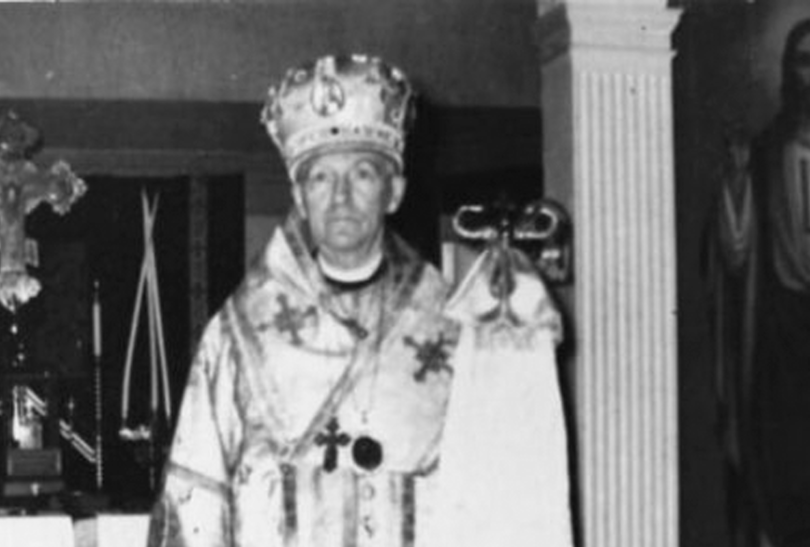

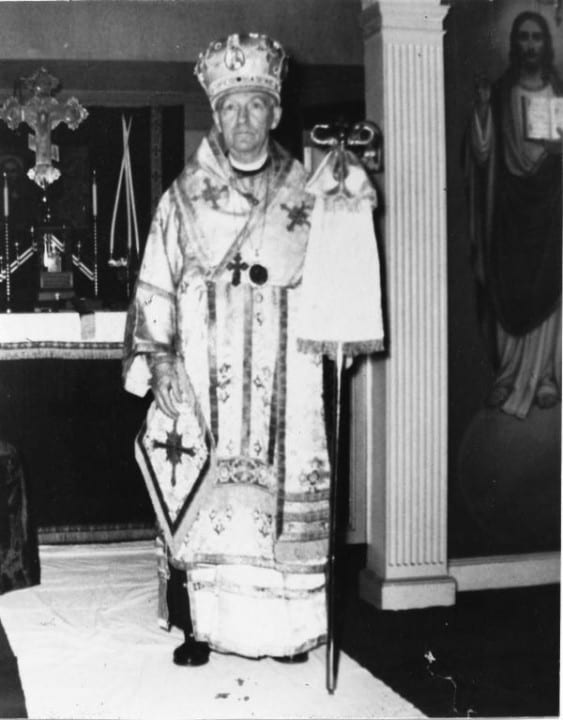
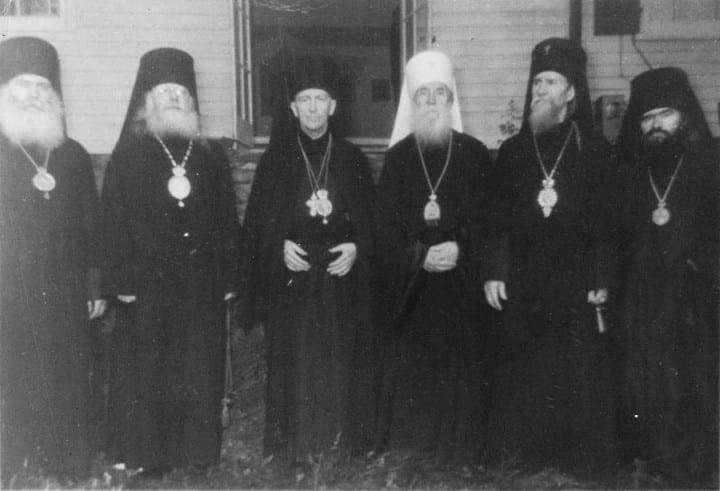
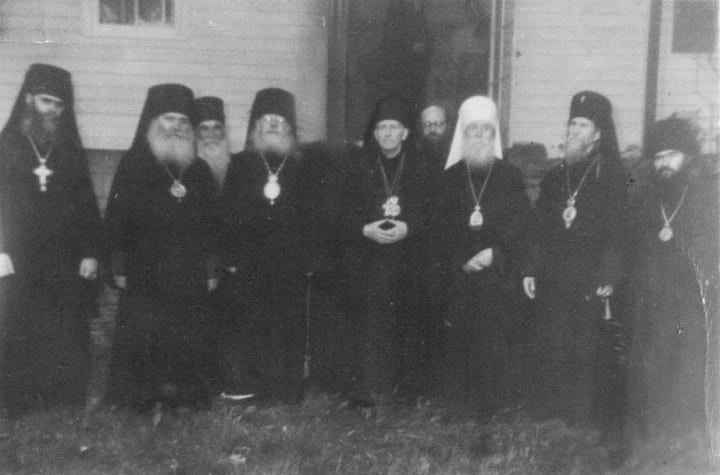
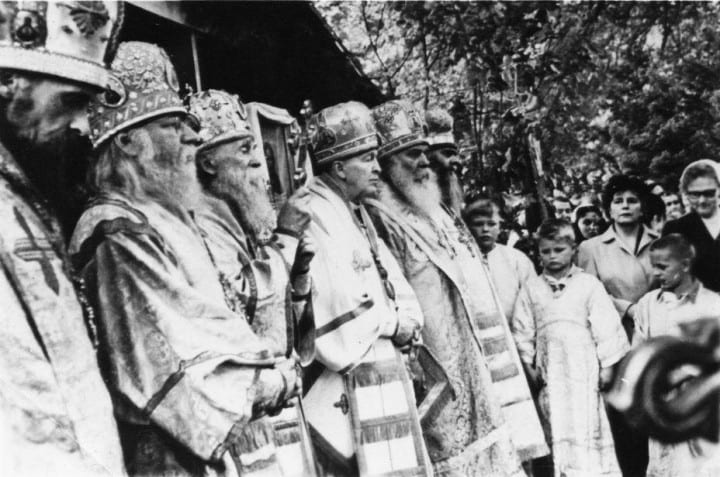






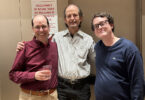
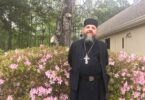

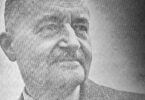
It is an interesting article, but I am afraid it may well contain a great deal of assumptions and hearsay. There are obviously several sides to the story about Archbishop James. Some of the comments about historical figures in the church are not entirely consistent with conversations I personally had with those figures. Perhaps well documented and named sources would be better.
I enjoyed the article about Bishop James Toombs whom I actually met while a student at SVS. He was a nice gentleman. The Adair brothers published a little magazine `American Review of Eastern Orthodoxy (AREO)` which was very interesting and full of gossip.
Re: Comment of Fr Alexis Duncan Conversations with historical figures fit the legal definition of `hearsay.` Historical figures usually do not share a great deal about positions held in the past that are currently seen as `unenlightened.` It is also so well known as to be almost a cliche, that people remember the good things they have done; things they may not be proud of are easily and sometimes completely forgotten. Almost as well known is the fact that `eyewitnesses` are very unreliable. The sources were documented and named; I used what is now the standard listing of sources. If anyone has any information that disagrees or differs with what appeared in the biography, I urge them to share it. I agree that `assumptions and hearsay` did appear in the biography-primarily in the comments about the critics and detractors of Abp. James-all I had ever heard from Abp. James` `critics` was nothing but assumptions, hearsay, and following some `party line.` It is a sorrowful that such things happen in the Church. Perhaps Fr Alexis could answer for me a question I would very much like to hear an answer to: Did any of the `historical figures` who appeared in court against St John of Shanghai & S.F. ever disclose their full role in that situation-especially during the years leading up to the Glorification, or afterwards? Although I do not really know, I would surmise that they did not.
I have known several of Arbp. James` associates including the wife of Arbp. De Witow. Everything in this article squares with what I learned from them. He seems, indeed, to hvae been a sincere and humble servant of God.
To whom it may concern , I am the step son of the late Gregory Adair mentioned in this article, I was wondering if other resources are known to you that might shed light on the man mentioned in your article` `Bishop John Chrysostom More-Moreno` . I am thrilled to see so much information related to stories I was told as a child online. It is truly a fascinating time in American Esotericism. For that I thank you. sincerely Joshua Adair
I was part of the small community of Apb. James from about May of 1955 through the Fall of 1957 when I left New York City for about a year. During that time there did not seem to be anything promoted that was not Orthodox doctrine, although occasionally there seemed to be some hint of an occult background, which I was told was the influence of Maryangela. The services were performed as translated by Fr. Lazarus Moore, and every attempt was made that they be done properly – with occasional questions directed to (then) Fr. George Grabbe for clarification. When I returned to New York in the Fall of 1958 things had changed significantly. Within a few weeks, there were sermons which clearly promoted the idea of reincarnation. At that point I left and went to the Synod Cathedral, and spoke of this to (then) Fr. George Grabbe. He questioned me closely, spoke with Met. Anastassy who also questioned me, and then contacted Abp. James. Within a few months I was given to understand that Apb. James had been “retired” from ROCOR. I had little or no contact with his group after that time. I still have the old photographs of his chapel.
Nina, thank you for the comment! The first information that I ever came across concerning Archbishop James was a post of yours – maybe the Indiana list? I think in that post, you mentioned that Archbishop James had been given a canonical release by Metropolitan Anastassy … if I am remembering correctly! It was a good while back! Any photos that you have, I would like to get copies if at all possible-please let me know if something can be worked out!
Thanks again for the comment! I was very glad to see it!
I find it quite fascinating that not a word is published of information that Bishop John Schneider had regarding Archbishop James. He was consecrated by him and knew him quite well. I have known Bishop John for many years and never once did I hear him speak of “reincarnation” or any other non-Orthodox practices. He has many documents that relay to that period of time in the ROCOR. The problem with history is that many times the larger entities survive to tell it and it is generally written to make them look as good as possible,
In 1980’s, I spent quite a bit of time with Archbishop John in New York. He was filled with knowledge, history, and love of the Orthodox Church and Faith. I never heard him speak of any other subjects- except for Hockey, his God-children and his beloved little dog, Becky. I did visit him in 2009, and he had a new little dog. He was of failing health when contacted about this content. He is dearly missed. May his memory be eternal.
For the school year 1965-66, I studied at SVS and sang in the choir. For Vigils on Saturday evenings, the choir used, for Matins, Irmosi from a rather large format bound folder of music, English text and standard Obikhod-style music,”By Archbishop James.’ I think that music was retailed in the bookstore, too. Perhaps there were other publications of Archbishop James Toombs which might be available….? At the All-American Council that elected Metropolitan Ireney, I had coffee with then Father Dmitri Royster and Father Hilary (Madison). I remember asking them who that Archbishop James was. They both seemed to know (of) him and they exchanged glances, but Father Dmitri only said, as I recall, “They say he was married.” Interesting days after the War…And the fertile heritage of Aftimios Ofiesh still lives on in the credentials of a whole miscellany of Orthodox entities outside the Local Orthodox Churches, especially in America.
Thank you for you comment, Vladika! Unfortunately, while doing research, I did not run across much of anything about publications … And, yes, indeed, the legacy of Aftimios Ofiesh lives on … I don’t understand his lionization as some sort of ‘hero’ of ‘American Orthodoxy.’ Of course, his marriage to a woman half his age at a Justice of the Peace in Niagara Falls didn’t exaclty bolster the image of Orthodoxy! The legacy, of countless, tiny, and bogus “independent jurisdictions” most unfortunately, only brings spiritual harm to those who have the misfortune to become involved …
For anyone interested, I was just informed that Bishop John Schneyder of the Orthodox American Church reposed on Oct. 26. Bishop John was the successor of Archbishop James Toombs …
Remembering this day, with sincere gratitude and love, the 11th anniversary of Bp. John’s falling asleep. MEMORY ETERNAL!
I can not express the depth and love of Holy Orthodoxy passed down to him from Abp. James and in turn to me, truly a most precious gift!
Thank you for taking the time to write this article Mr. Woerl. I was a very young child when I was baptized into this beautiful Orthodox Church. In the late 1960’s I was taken to New York to meet the Archbishop and Maryangela. Indeed, Maryangela lived in an adjacent apartment, and there were others present to care for the Archbishop, including my father, Nathanael, Fr. John and Irene Schneyder, and Fr. Francis. As I recall, the Plummers lived in the building and also cared for Archbishop James.
To clarify, the Plummer’s that I referred to in my comment regarding my memory of the the apartment at 57th street, are not to be confused with Bishop Plummer of the HOCIA.